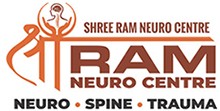




Spine Problems
Home / Spine Problems


Invasive Spine Surgery
Minimally invasive spine surgery (MISS) uses advanced technology and innovative techniques to treat back pain and neck pain caused by a variety of spinal disorders.
Some of the spinal conditions MISS can treat are:
Through computer-assisted technology and highly specialized tools, minimally invasive surgery is an attractive option for patients who want a quicker recovery after surgery, less post-operative pain, and smaller incisions. Minimally invasive spine surgery minimizes soft tissue damage (eg, muscles). MISS may be a less risky, less invasive option compared to traditional open spine surgery. Although there are advantages of MISS, the goals of MISS procedures are the same as open traditional procedures.
Spinal Cord Tumors
A spinal tumor is a growth that develops within your spinal canal or within the bones of your spine. A spinal cord tumor, also called an intradural tumor, is a spinal tumor that that begins within the spinal cord or the covering of the spinal cord (dura). A tumor that affects the bones of the spine (vertebrae) is called a vertebral tumor.
Spinal cord tumors may be classified as one of three different types depending on where they occur relative to the protective membranes of the spinal cord.
Types of intradural tumors
Intramedullary tumors begin in the cells within the spinal cord itself, such as gliomas, astrocytomas or ependymomas.
Extramedullary tumors grow in either the membrane surrounding the spinal cord or the nerve roots that reach out from the spinal cord. Although they don’t begin within the spinal cord itself, these types of tumors may affect spinal cord function by causing spinal cord compression and other problems. Examples of extramedullary tumors that can affect the spinal cord include meningiomas, neurofibromas, schwannomas and nerve sheath tumors.
Tumors from other parts of the body can spread (metastasize) to the vertebrae, the supporting network around the spinal cord or, in rare cases, the spinal cord itself.
Spinal tumors or growths of any kind can lead to pain, neurological problems and sometimes paralysis. A spinal tumor can be life-threatening and cause permanent disability.
Treatment for a spinal tumor may include surgery, radiation therapy, chemotherapy or other medications.
CV Junction Abnormalities
Caniocervical junction abnormalities are congenital or acquired abnormalities of the occipital bone, foramen magnum, or first two cervical vertebrae that decrease the space for the lower brain stem and cervical cord. These abnormalities can result in neck pain; syringomyelia; cerebellar, lower cranial nerve, and spinal cord deficits; and vertebrobasilar ischemia.
Diagnosis is by MRI or CT. Treatment often involves reduction, followed by stabilization via surgery or an external device.
Symptoms and Signs
Symptoms and signs of craniocervical junction abnormalities can occur after a minor neck injury or spontaneously and may vary in progression. Presentation varies by degree of compression and by structures affected. The most common manifestations are:
- Neck pain, often with headache
- Symptoms and signs of spinal cord compression
Endoscopic Disc Surgery
Endoscopic discectomy, a common type of endoscopic spinal surgery, is a minimally invasive surgical procedure used to remove herniated disc material that is causing pain in the lower back and legs (lumbar), mid back (thoracic), or neck and arms (cervical).
Endoscopic discectomy is the least invasive and effective surgical technique for treating spinal disc herniation patients. With endoscopic spine surgery, surgeons do not need to remove bones and muscles in order to remove herniated discs. Surgeons can see the spine with a camera, smaller than a smart phone camera, through a small surgical port (tube). Large incisions are avoided. The procedure does not traumatize your spine like traditional spine surgeries do. The whole procedure for a disc herniation takes about 30 minutes. The patient goes home in 2- 3 hours when the surgery is done in a surgery center.
Spinal Fixation
Spinal fusion is surgery to join two or more vertebrae into one single structure. The goal is to stop movement between the two bones and prevent back pain. Once they’re fused, they no longer move like they used to. This keeps you from stretching nearby nerves, ligaments, and muscles that may have caused discomfort.
Spinal fractures are disastrous, and can cause severe complications, including paralysis and even a severely reduced lifespan, but fracture fixation procedures can be utilized to provide pain relief, restore mobility and increase the quality of life. Spinal fractures can be caused by a number of events, but most are “high energy” events that cause massive trauma.
Tuberculosis Spine
Tuberculosis (TB) is a potentially serious infectious disease that mainly affects your lungs. The bacteria that cause tuberculosis are spread from one person to another through tiny droplets released into the air via coughs and sneezes.
Tuberculous disease in human beings predominantly affects the Eastern hemisphere of the world. Up to three quarters of the world’s population lives in the Eastern hemisphere, and it is here that many live in poorly nourished, overcrowded and in subnormal social conditions.
Signs and symptoms of active TB
Many strains of tuberculosis resist the drugs most used to treat the disease.People with active tuberculosis must take several types of medications for many months to eradicate the infection and prevent development of antibiotic resistance.
- Coughing that lasts three or more weeks
- Coughing up blood.
- Chest pain, or pain with breathing or coughing.
- Unintentional weight loss.
- Fatigue
- Fever
- Night Sweats
- Chills
Syringomyelia
Syringomyelia is a rare disorder in which a cyst forms within your spinal cord. As this fluid-filled cyst, or syrinx, expands and lengthens over time, it compresses and damages part of your spinal cord from its center outward.
Damage to the spinal cord caused by a syrinx can lead to symptoms such as progressive pain, stiffness, and weakness in the:
- Back
- Shoulders
- Arms
- Legs
Symptoms of Syringomyelia
Symptoms of this disorder are caused by the pressure the syrinx puts on the spinal cord and the damage that follows. They may include:
- A progressive weakness and pain in the back, shoulders, arms, or legs
- An inability to feel hot or cold
- A loss of pain sensation
- Difficulty walking
- Bowel and bladder function problems
- Facial pain and numbness
- Curvature of the spine, or scoliosis
Spine Surgey Services
Opening Hours
- Monday – Friday 8.00 – 18.00
- Saturday 8.00 – 15.00
- Sunday Closed
- Holidays Closed
Book An Appointment
Look for our specialty clinic in VIC for the best service
Lorem ipsum dolor sit amet, consectetur adipiscing elit. In nec est rhoncus, congue sem sit amet, tempor nunc. In purus ipsum,
